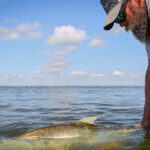
Jack Project: Successful Tagging Missions in Gulf
The Jack Project continues to gather momentum as tagging teams across the Gulf and South
If you’ve spent any time on the water in South Florida, chances are you’ve heard the name Captain Mike Holliday. Based out of Stuart, Florida, Holliday is a veteran guide, outdoor writer, and longtime voice in the angling community. With decades of experience, Mike has watched fisheries rise, fall, and shift in unexpected ways. But through it all, one species has remained a staple in his operation—and it’s not the one you might expect.
We sat down with Mike to talk about jack crevalle, a fish that’s often overlooked in favor of more glamorous gamefish like tarpon, redfish, and snook. What we got was a window into just how vital jacks have become—not just for guides trying to run successful trips, but for the health and accessibility of our coastal fisheries.
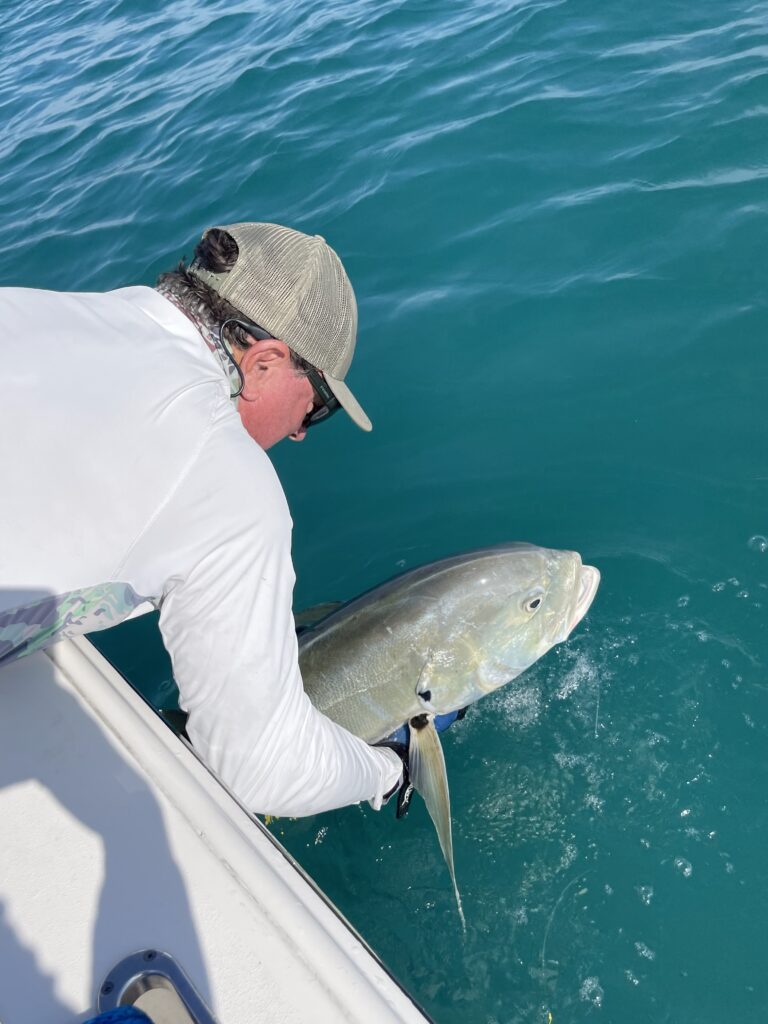
We kicked things off with a simple question: What’s it like to hook a big jack?
Mike didn’t hesitate:
“It’s raw energy coming at you. You’re probably going to miss the first couple of fish—they eat it coming at you so fast. I’ve seen clients’ legs literally shake, getting buck fever staring down a huge school of jacks.”
He’s not exaggerating. Giant jacks—some topping 30 pounds—move in fast, often in large schools that decimate bait balls or chase plugs right up to the side of the boat.
“They’re packed with power and ready to annihilate anything in their way. When you hook one, the biggest thing is just hanging onto your rod. You’re gonna get a crazy bite. It’s pretty much a guarantee.”
The excitement isn’t just for seasoned pros either. In Mike’s words, “They’re the perfect species for every angler—beginners, advanced, even the elite fly guys. Beginners can have success blind casting for them, while even the most battle-tested anglers can be humbled by the nuances of fishing to the big ones. Everyone can connect with a jack.”
Over the past few seasons, Mike says jacks have become more central to his trips—not just as a backup plan, but as a primary target.
“They’ve always been important, but lately they’ve been critical. Juvies are just as important as the big ones. When snook or trout bites are tough, jacks bring the action. That’s what clients are paying for—a great day on the water.”
More and more, he sees people booking trips just to target jacks.
“I’ve got fly anglers flying in from out of state to catch jacks. Several years ago, people didn’t even know what they were. Now? They’re a gamefish. No doubt.”

So why don’t jacks get more respect?
“Historically, people have snubbed them because you can’t eat them. That’s it. They’re underrated because they’re not a food fish. But that doesn’t mean they’re not worth our attention.”
He also points out the irony of their aggressiveness.
“Sometimes, they’ll ruin a pompano bite because they get there first. You’re working a jig for something else, and a jack shows up and wrecks it. People get frustrated, but honestly—it takes real skill to catch a big jack. They’re smart, powerful, and unpredictable.”
In other words, it’s time we give jacks the credit they deserve.
For Mike, the biggest concern isn’t whether jacks are fun to catch. That part’s obvious. The real issue is how little we actually know about them.
“Are they one connected stock? Nobody really knows. But they’re getting hammered—both commercially and recreationally. There’s a lot of pressure on them, and not enough science to say whether we’re doing damage.”
Over the past 20 years, Holliday has seen with his own eyes the decline. But without the science, there’s no way to know for sure–making it super important to gather data so we can start to make smart decisions to make sure they remain a viable fishery.
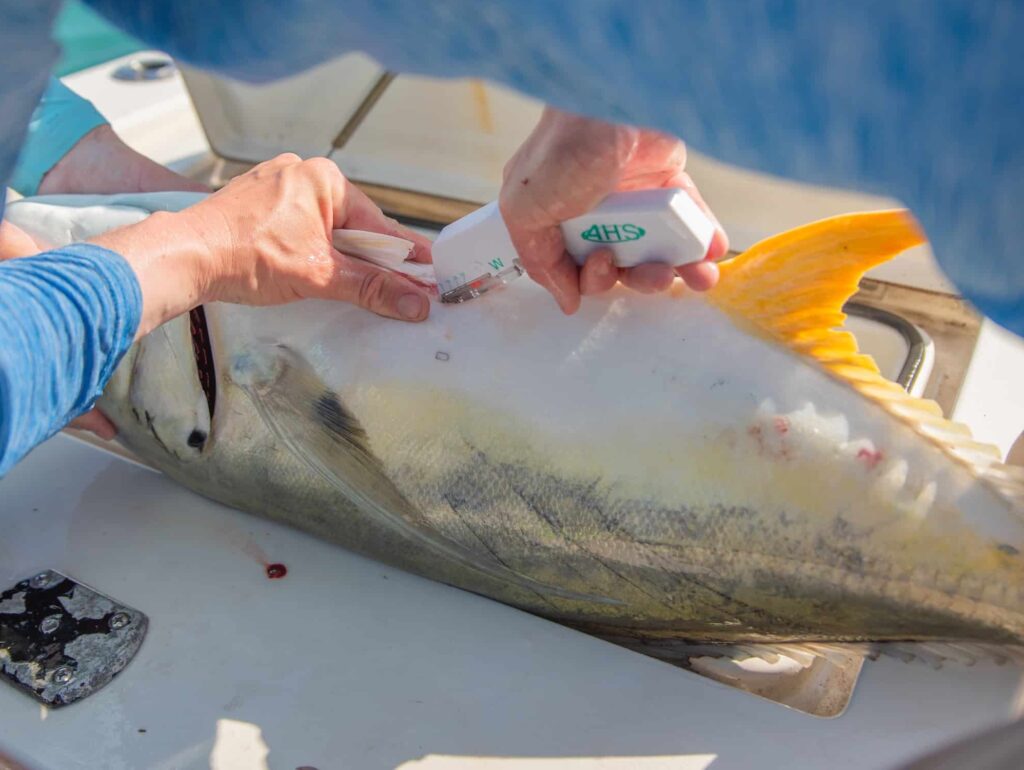
It’s a familiar theme: a species beloved by guides and anglers, but overlooked in formal management conversations. That needs to change—before we look up one day and realize they’re gone.
“You don’t always notice how important jacks are until they’re not around. In fisheries that are collapsing—like we’ve seen with redfish and trout in parts of Florida—jacks become even more important. They carry the day.”
Not every angler has the technical skills to sight-fish for tarpon or thread a shrimp into tight mangrove pockets for snook. But almost anyone can fish for jacks—and that accessibility is part of what makes them so valuable.
“Blind casting, throwing to schools—it’s action that everybody can get in on. And when people are smiling, high-fiving, and reeling in big fish, that’s what keeps them coming back.”
That’s good for guides. That’s good for the economy. And if we take the time to study and protect this species, it could be good for the long-term sustainability of our coastal fisheries too.
At ASGA, we believe every species plays a role—and when you talk to veteran guides like Mike Holliday, it’s clear that jack crevalle deserves a bigger spotlight. They’re powerful, thrilling, and increasingly essential to fishing in the Southeast.
We’re proud to be running The Jack Project, a collaborative effort to better understand and promote the conservation of this often-undervalued and understudied fish. We believe every angler deserves a chance to experience the feeling of “raw energy coming at you.”
Stay tuned for more from the field—and if you’ve got jack stories of your own, send them to info@saltwaterguidesassociation.org — we’d love to hear them.


The Jack Project continues to gather momentum as tagging teams across the Gulf and South
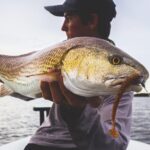
This guide is meant to educate anglers, conservationists, and the public about the Atlantic States
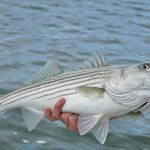
Imagery Courtesy of Sean Cobelli Media We encourage anglers, guides and conservationists to use this
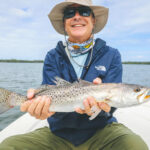
Last week, the Florida Fish and Wildlife Conservation Commission (FWC) hosted the 2025 Sea Trout Symposium.
We rely on our members and donations to keep fighting for a sustainable tomorrow in marine conservation.
GIVE THE GIFT OF FISHERIES CONSERVATION THIS HOLIDAY SEASON. SHOP ASGA GOODS THAT FUND FISHERIES RESEARCH & ADVOCACY CAMPAIGNS
JOIN ASGA IN CALLING FOR CRITICAL MANAGEMENT ACTION AFTER YEARS OF SPAWN FAILURES & POOR MANAGEMENT.
By using this website, you agree to our use of cookies. We use cookies to provide you with a great experience and to help our website run effectively. To learn more, please review our privacy policy.